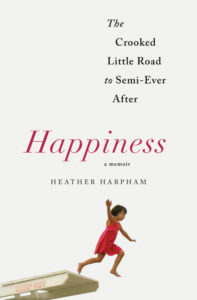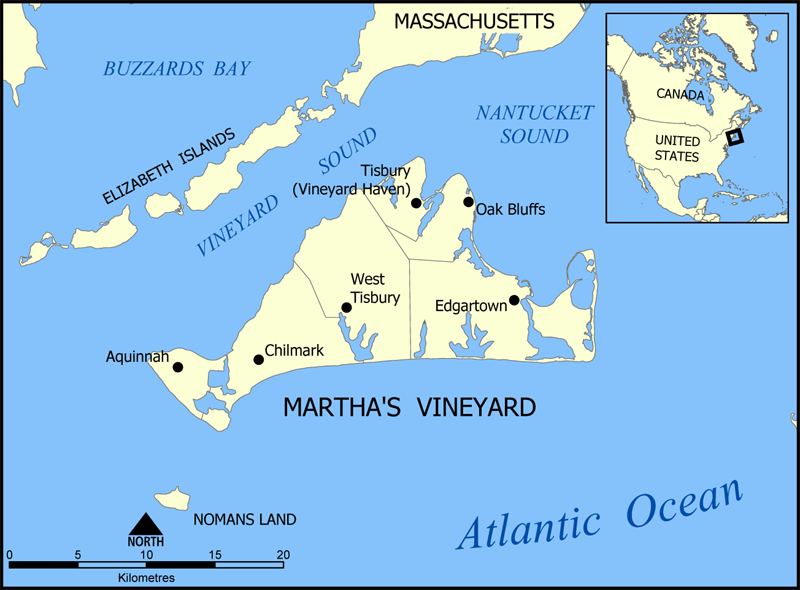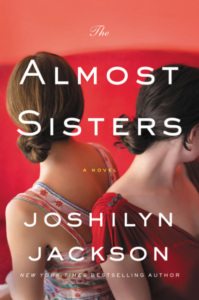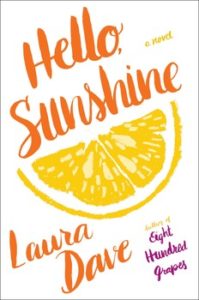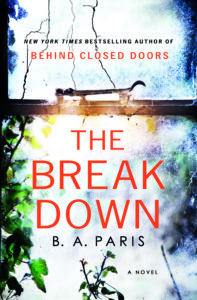 Unreliable Narrator? (British village; July – September, present-day): It’s awfully tempting to compare The Breakdown with B. A. Paris’ knock-out debut Behind Closed Doors, reviewed here a year ago. If you’re wondering if her second novel disappoints because her first was too good an act to follow, the answer is unequivocally no. Both are non-stop, suspenseful novels that get-inside-your-head. Both excel at keeping the tension going and going and going.
Unreliable Narrator? (British village; July – September, present-day): It’s awfully tempting to compare The Breakdown with B. A. Paris’ knock-out debut Behind Closed Doors, reviewed here a year ago. If you’re wondering if her second novel disappoints because her first was too good an act to follow, the answer is unequivocally no. Both are non-stop, suspenseful novels that get-inside-your-head. Both excel at keeping the tension going and going and going.
How does the author achieve a relentless, psychological pace? Writing is such an elusive, subjective art. Wish there was a definitive blueprint. At best, suppositions.
Paris has an impressive knack for creating unreliable characters. In Behind Closed Doors, the narrator’s perpetrator, her husband, was pathologically unreliable, a psychopath who fooled everyone. This time it’s the narrator herself – thirty-three year-old high school teacher Cass – who is unreliable. We suspect her reliability more than you would otherwise by establishing that her mother had early-onset dementia by forty-four. (Before marrying Matthew a year ago, Cass spent three stressful years caring for her Mom, now deceased.) The author takes this fact further by making sure her protagonist tells us at every twist and turn that she doubts her trustworthiness, fears she may have inherited the disease as she’s been forgetful lately, worried she’s losing her memory, an early symptom. A perfect set-up for us to question who and what to believe is going on.
The second set-up is mirrored in Paris’ first novel. The author orchestrates an opening scene in which the reader senses something ominous is at play. In Behind Closed Doors this happened at a dinner party. In The Breakdown, a thunderstorm is brewing as Cass bids goodbye to colleagues as their summer break kicks-off. The weather worsens. By page three, its palpable her Mini car is no match for the conditions. Matthew called to warn her to stay clear of the short-cut home. Cass intended to heed her husband’s advice, but in the blink of an eye made the kind of decision any driver might have given heavy traffic and no let-up in the wicked downpour. A decision that changes her life.
“Although this road is beautiful by day – it cuts through bluebell woods – its hidden dips and bends will make it treacherous on a night like this. A knot of anxiety balls in my stomach at the thought of the journey ahead. But the house is only fifteen minutes away. If I keep my nerve, and not do anything rash, I’ll soon be home. Still, I put my foot down a little.”
Language is a third element in the author’s highly-effective style. Prose that, like the merciless weather, doesn’t let up. It flows on and on conversationally, naturally, realistically, so Cass feels very familiar to us. She could easily be a friend, a sister, a neighbor, and we’d be someone she’s very comfortable confiding her innermost guilt, worries, and fears, which intensify at a quick pace. Increasingly, Cass finds herself telling little white lies to Matthew and others, worried they’ll also think she’s confused, exhibiting more and more symptoms of dementia. This leads her to isolate herself more and more, dig herself deeper into this mental abyss. In a matter of weeks, she’s spiraled rapidly downhill, terrified of the terror she’s experiencing. At every step of the way, she’s not sure if it’s internal or external, imaginary or real. That’s because Paris has laid the groundwork, by page four, with an incident that ignites her duress.
Let’s turn back onto that haunting road. If it weren’t for the inside jacket cover, you’d be pretty sure Cass’ vehicle was headed for disaster. You wouldn’t be totally off-base as there is a problem with a car – someone else’s. Broken down, pulled over to the side of the road. Cass thinks instinctively, as we might. Should she slow down, see if she can help, or drive by not to risk her own safety?
We like Cass from the beginning for she tries to be a Samaritan, stops beside the car to see if there’s something she can do. What she sees is a woman gazing at her through the dark, wet window, so she can’t make out her face. Since the motorist shows no sign of needing assistance, Cass assumes, as we would, she’s waiting for road assistance to arrive and thus drives home. The next day, Cass learns the woman in the car was found murdered. Who wouldn’t feel guilty? Think we might have saved a life.
On second thought, Cass realizes she too could have been killed. A killer is on the loose. Since she lives not far from the wooded murder site in a charming cottage that’s also isolated, her mind starts working overtime, which ours might do too. But the truth is we’re not like Cass. We wouldn’t let our wariness completely overcome us, paralyze us, because we’re not petrified we’re deteriorating mentally.
What’s the chance that Cass actually knows the murdered woman, named Jane? The two recently met at her best-friend-like-a-sister, Rachel’s workplace. Jane and Cass clicked, even made a plan to get together soon. Of course, the guilt magnifies.
There are indications something is terribly amiss. A series of things – forgetting appointments, promises, conversations, her pocketbook, where her car is parked. Paris ups the ante as these little things get bigger, more alarming, like seeing a knife laying out in her kitchen that could be the one the killer used, returning to it once the police arrive and its gone. Is it hers? Did she forget to put it away? Hallucinate it? Added to all that turmoil is the constant barrage of silent calls she’s now receiving, a “chilling silence.” Matthew tries to calm her down, says the calls are merely solicitors. But Cass senses breathlessness at the other end. Could it be the killer, who saw her car at the scene of the crime? Is someone stalking her? Or, is her mental state doing the tormenting?
We’re riveted to the pages, on the lookout for clues, aware how the author so cleverly planted a web of seeds in Behind Closed Doors. Is someone watching her? Or, does poor Cass need some watching? A toxic, brilliant stew.
The title tantalizes too. Does it refer to Jane’s tragic breakdown? Our narrator’s nervous breakdown? Exacerbated by lots of coincidences and having too much idle time alone over a summer break?
You may think you’ve figured this thriller out around page 200. But Paris is smarter than us.
Lorraine
